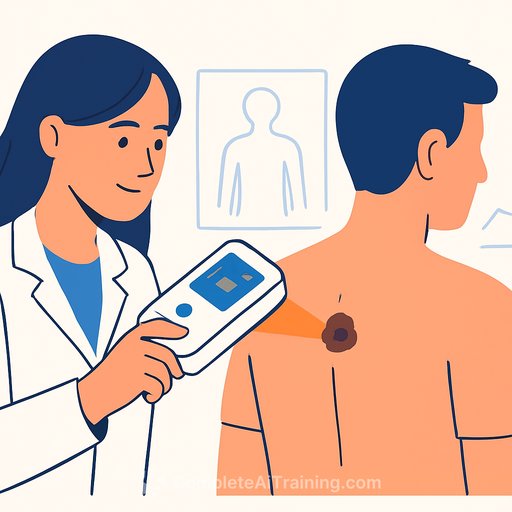UMY Students Build "Scanoma," an AI Tool for Early Skin Cancer Detection
A student team at Yogyakarta Muhammadiyah University (UMY) built Scanoma, an AI-driven tool that analyzes skin lesions in real time for early cancer detection. The project shows how a small, focused team can push practical AI into health settings with tight constraints.
What they built
Scanoma runs a Convolutional Neural Network (CNN) on a Raspberry Pi and ingests images from a digital dermatoscope. In testing, the model reached 75.22% accuracy on lesion classification-promising for early screening, with clear headroom for iteration.
The device is portable, power-efficient, and designed for clinics with limited resources. Pharmacy students handled lesion characterization and clinical parameters; electronic engineering students took on hardware integration and image processing.
Build timeline and context
The team developed Scanoma within the 2025 National Funding Student Creativity Program (PKM), from July 7 to November 3, 2025. Along the way they dealt with slow hardware arrivals, cable mismatches, and software errors-then stabilized the stack and shipped a working prototype.
Why this matters for developers
- On-device inference: Running a CNN on a Raspberry Pi shows you don't need a data center to be useful. You need constraints, a clean pipeline, and reliable I/O.
- Structured collaboration: Clinical inputs (labels, parameters) paired with embedded engineering leads to a product that's usable outside the lab.
- Observable accuracy: 75.22% sets a baseline. From here: better datasets, augmentation, domain-specific preprocessing, calibration, and targeted error analysis.
Technical highlights
- Data capture via digital dermatoscope improves image consistency (lighting, focus), which helps training and inference stability.
- CNN-based classifier for lesion analysis, suitable for quantization or pruning to keep latency low on edge hardware.
- Raspberry Pi for portability and cost control; simple to deploy in clinics and remote settings.
What's next
- Increase dataset diversity and implement rigorous validation with clinicians to reduce bias and improve sensitivity/specificity.
- Add on-device triage UX: clear risk categories, uncertainty flags, and guidance to see a professional-without making clinical claims.
- Plan for regulatory pathways and data protection from day one.
From the team
"We want to prove that technology can help people take action faster."
"If this tool can help just one person recognize cancer symptoms more quickly, our struggle is not in vain."
Resources
- Raspberry Pi - practical docs and hardware options for edge AI.
- Convolutional Neural Networks (CNNs) - quick refresher on the core architecture.
Build your AI skill stack
If you're mapping out your own edge AI or computer vision roadmap, explore focused training paths by role here: AI courses by job.
Your membership also unlocks:






